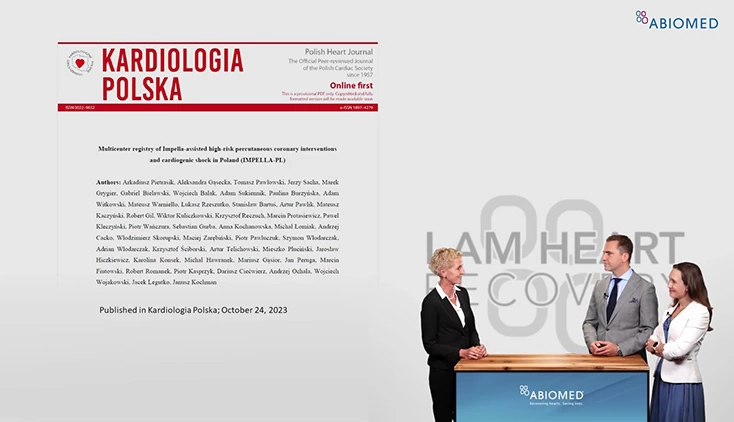Access & Closure, Complete Revascularization, Patient Identification, Anticoagulation, Protected PCI
EuroPCR 2023: Best Practice Approach to High-risk PCI
Nikos Werner, MD, explains that he and several experts in Protected PCI procedures in Europe have developed best practices for high-risk percutaneous coronary interventions (PCI). These practices address patient selection, pre-procedural workup, anticoagulation, revascularization, patient handling in the cath lab, and bailout and complications management.
Patient selection, he explains is based on patient-related criteria, coronary anatomy, and hemodynamic status. He emphasizes the importance of discussing these factors with a heart team and with patients when deciding to perform Protected PCI.
Once the decision to proceed with Protected PCI is made, the pre-procedural workup is important to ensure patients do not have contraindications to Impella® heart pump use, and to ensure that femoral access and vascular entry point assessments are favorable. He briefly describes how conventional angiography, computed tomography (CT), and vascular ultrasound can be used to evaluate vascular access.
Dr. Werner explains that while there are standard algorithms for heparin monitoring in patients supported with Impella®, the best practices group explored the issues of heparin-induced thrombocytopenia (HIT), over- and under-anticoagulation, bicarbonate-based purge solution (BBPS), and acquired von Willebrand factor (vWF) syndrome.
“The most important step in this whole process is, of course, the revascularization,” Werner states, acknowledging the complexity of assessing success of revascularization. He highlights data suggesting that more complete revascularization with Protected PCI improves left ventricular function and results in lower rates of major adverse cardiac and cerebrovascular events (MACCE).
In the cath lab, monitoring, weaning, and access site closure are key areas for best practices. With regard to bailout and complications management, Dr. Werner explains, “I think this is more or less about vascular access site complications.” He mentions dissection, thrombosis, and embolization, and the important role vascular access plays in resolving these complications.
Dr. Werner also addresses a question about duration of Impella support and weaning strategies stating the importance of right heart catheter data in these procedures.
Sign Up for Latest Updates
NPS-3717


